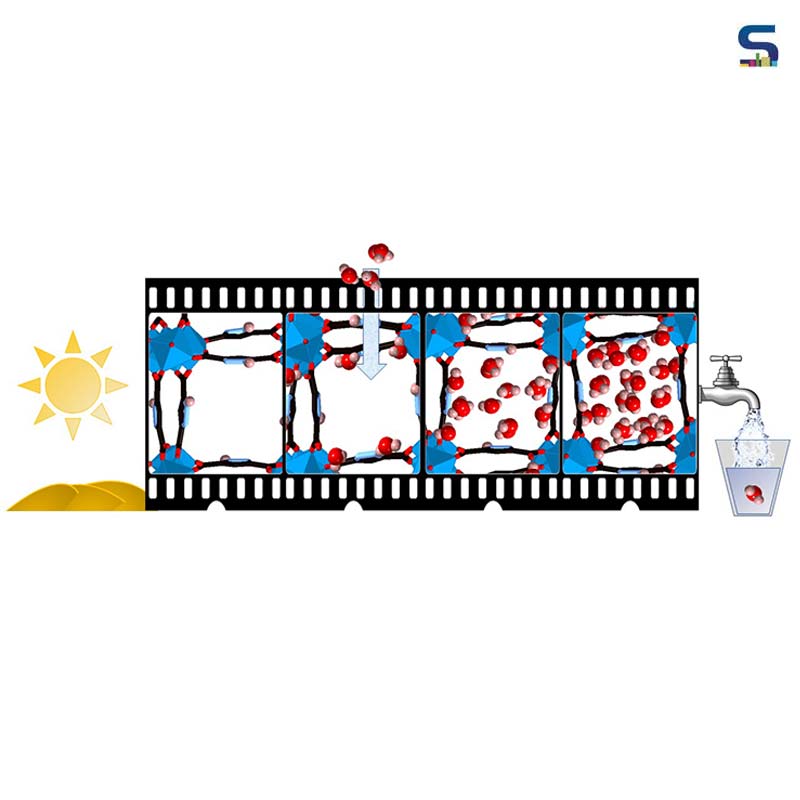
Extracting drinking water from the air in a desert might sound like science fiction but in fact it can be possible sooner than we think. Researchers at the Chalmers University of Technology are leading expertise in the field and have claimed to have found the solution in a new material class called metal-organic frameworks (MOF) that possess exceptional properties.
Although MOF appeared in the 90s, today chemists have produced around 80,000 MOFs with different properties. And a group of researchers led by Professor Lars Ohrstrom and Dr Francoise Amombo Noa at the Department of Chemistry and Chemical Engineering at Chalmers have been studying this area for years and are often engaged as experts internationally.
“MOF is one of our most promising areas for developing many of the sustainable technical solutions that the world needs but this is about more than applications. It is a fundamental revolution in how we look at the solid state,” says Ohrstrom.
Outstanding properties
MOF is a solid, porous substance built by metal ions that are linked together with organic molecules to form a network – a molecular version of the model kit mekano. The networks have large internal holes where you can put things in and take them out. This gives them very good properties for efficiently capturing or separating different substances. Researchers see great potential for the use of MOFs in many different important areas such as biogas storage, carbon dioxide capture, controlled delivery of drugs (so-called drug delivery) and for the destruction of chemical weapons.
Recently, commercial use of MOF materials has begun to emerge to store toxic gases used in the electronics industry and in the form of the so-called crystal sponges for research applications in the pharmaceutical industry.
Progressive study
An area where MOFs can contribute to a revolutionary development is the extraction of water from desert air is work in progress. In this context, the MOF acts as a sponge in which water can easily slip into and then can be stored in the materials voids. The problem, which the researchers are struggling to solve, is that it takes a lot of energy to release the water. However, American and German researchers have managed to get an MOF to release the water at 10 degrees lower temperature than before, and have been able to show in detail how the water molecules are collected. The study is a major step forward in the field and was recently published in the scientific journal Science.
The illustration, shared above, shows how water molecules can be captured from desert air in MOFs, stored in the materials voids and surfaces, and released as water. “So far, this technology is only available at the pilot scale; but fully developed, it could make extracting drinking water in desert areas possible. The wider consequences that this can have are even greater. Technology that allows us to use phase transitions of water from gas to liquid is important in everything from desalination of seawater to controlling the indoor environment in buildings,” explains Ohrstrom.
In a newly started project, his research group along with his colleagues at the Swedish University of Agricultural Sciences, SLU will develop MOFs to purify water from environmentally harmful highly fluorinated substances PFAS. The researchers at Chalmers are also contributing to spread the knowledge about MOFs in broader context by penning down a textbook which would help doctoral students and researchers.
That said, to address its lower thermal and chemical stability, the group at Chalmers, in collaboration with colleagues at the University of Gothenburg, Uppsala University, the University of Southern Denmark and Rigaku company in Germany have studied how the networks design affects the properties. There upon they have discovered MOFs where the metal ion networks are in form of sheets. They presented their results in an article that was published in the scientific journal Chem, last summer. “We propose a new strategy for more stable MOFs and hope that the study will contribute to a much-needed progress in the evolution of this area,” says Noa.
In the study, the researchers have also proposed a new approach towards MOFs and a common nomenclature in the field. “How we describe, name and talk about these materials affects how we think about them, and thus, our opportunities to use them in real applications,” adds Ohrstrom.
Illustration credits: Chalmers University of Technology